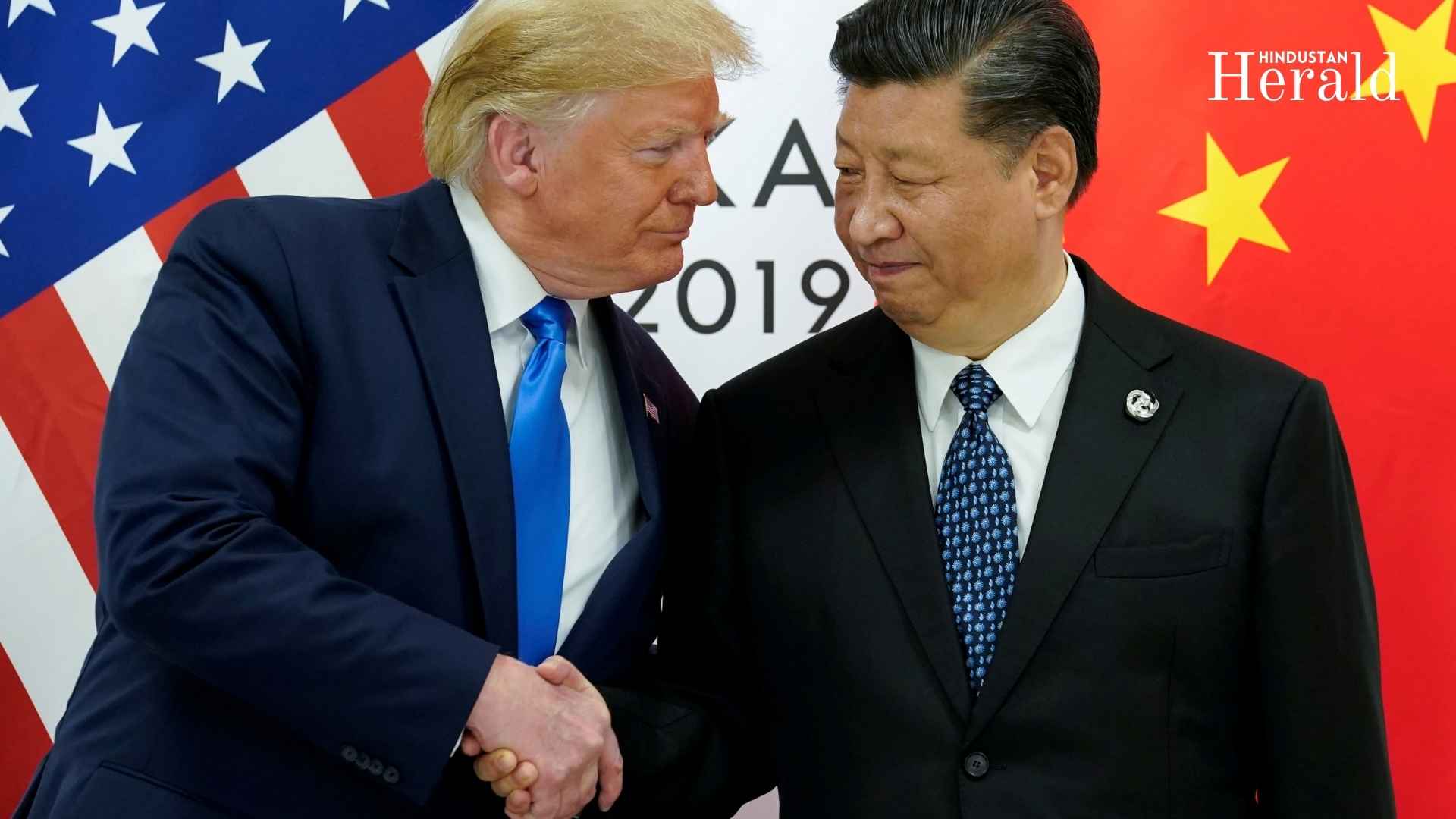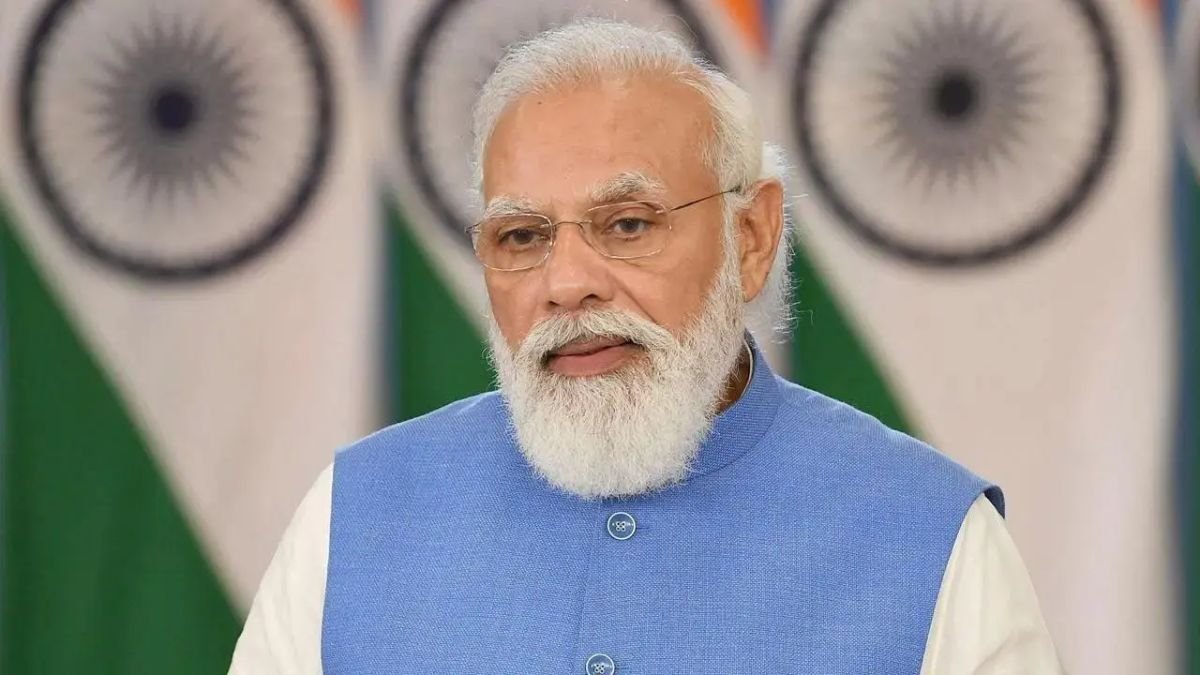US-China Trade War Escalates as Trump Threatens 100% Tariffs, China Vows to “Fight to the End”

Table of Contents
Washington/Beijing/New Delhi, April 9, 2025 — The world’s two largest economies are on the brink of a full-scale trade war after U.S. President Donald Trump announced plans to impose 100% tariffs on all Chinese imports beginning Wednesday, April 9.
Beijing has responded with defiance, warning that it will “fight to the end” against what it describes as economic coercion by Washington. The move threatens to send global markets into deeper turmoil, already rattled by months of escalating trade rhetoric and retaliatory measures.
“This is not just about tariffs anymore — this is a battle for economic dominance,” said a senior IMF official on Tuesday.
How Much Trade Is at Stake?
According to the U.S. International Trade Commission, total trade in goods between the United States and China reached $585 billion in 2024:
- U.S. imports from China: $440 billion
- U.S. exports to China: $145 billion
This left the U.S. with a $295 billion trade deficit, a figure Trump has repeatedly criticized — although he has falsely claimed it to be over $1 trillion in recent weeks.
While the trade deficit is a long-standing concern, analysts note that the U.S. reliance on Chinese imports has declined — from 21% of total imports in 2016 to 13% in 2024. However, many Chinese goods have been rerouted through Southeast Asian countries, blunting the impact of earlier tariffs.
Top Products Traded Between the US and China (2024)
US Exports to China:
- Soybeans – 9%
- Aircraft and engines – 8%
- Pharmaceuticals – 4%
- Petroleum – 3%
- Integrated circuits – 4%
China Exports to US:
- Smartphones – 9%
- Laptops – 7%
- Batteries (EVs) – 3%
- Toys – 2%
- Telecom equipment – 2%
The largest hit is expected in electronics and consumer goods, with tariffs pushing smartphone and laptop prices significantly higher in the U.S.
The 100% Tariff Impact: What Changes from April 9?
All Chinese imports to the U.S. are currently subject to an average 20% tariff. If President Trump moves ahead with his plan, that rate will jump fivefold, raising consumer prices and production costs across multiple sectors:
- Electronics could rise by 25–35%
- Battery prices may double, hurting EV adoption
- Toy, clothing, and appliance prices may increase 20–40%
In return, China’s retaliatory tariffs will target U.S. goods such as soybeans, oil, aircraft, and pharmaceuticals, raising prices for Chinese consumers and further impacting American exporters.
Tariff Evasion and Southeast Asia in the Crossfire
Earlier U.S. tariffs imposed under Trump and maintained by Biden led Chinese manufacturers to circumvent penalties by shifting production to countries like:
- Malaysia
- Thailand
- Cambodia
- Vietnam
These nations assemble goods and export them to the U.S. to bypass direct China-origin tariffs. But now, Trump’s administration plans to extend the 100% tariff structure to these countries as well — targeting goods of Chinese origin regardless of shipping route.
“The strategy is to shut every backdoor to Chinese exports,” said Trump’s trade advisor Peter Navarro.
China’s Economic Weapons: Rare Earths and Raw Materials
Beijing is not without leverage. China plays a dominant role in refining key industrial metals essential for global manufacturing, including:
- Lithium
- Copper
- Rare earth elements
- Germanium and gallium (used in military electronics)
Beijing has already restricted exports of germanium and gallium, signaling its readiness to escalate. A broader restriction on battery-grade lithium or microelectronics could seriously damage U.S. tech and defense industries.
Technological Blockade: The US Strategy Beyond Tariffs
The U.S., under both Biden and Trump, has pushed to block China’s access to high-end microchips — vital for artificial intelligence, quantum computing, and defense systems.
Trump’s team has suggested extending these restrictions and pressuring allies like Japan, the Netherlands, and South Korea to stop supplying advanced chip-making tools to China.
How Might This Affect India and Other Economies?
The U.S. and China collectively account for 43% of the global GDP, according to the IMF’s 2025 estimates. A breakdown in their trade relationship could ripple across the world, especially affecting:
- Emerging economies reliant on export markets
- Manufacturing hubs like India, which could benefit from supply chain shifts but face inflationary pressure on imported electronics
- Global investors, who may become risk-averse amid market volatility
“The trade war between China and the U.S. poses a direct threat to global growth,” warned economist Raghuram Rajan, adding that “India must prepare for supply shocks and capital outflows.”
Will China Dump Excess Production Globally?
One of the most immediate risks is Chinese industrial overcapacity, especially in sectors like:
- Steel
- Solar panels
- Electric vehicle components
If U.S. markets close, China may redirect exports to Europe, South America, Africa, and South Asia, potentially undercutting local manufacturers. The UK Steel lobby has already warned of a looming flood of cheap Chinese steel into European markets.
Apple’s Value Plummets Amid Trade Tensions
Tech companies like Apple, which manufactures many of its products in China, are already feeling the heat. Over the past month, Apple’s share price has dropped 20%, largely due to fears of:
- Higher production costs
- Disrupted supply chains
- Chinese consumer backlash
Apple’s iPhones alone account for 9% of U.S. imports from China, making the company especially vulnerable.
A Trade War with Global Consequences
With Trump’s 100% tariff deadline set for April 9, the US China trade war 2025 is reaching a critical threshold. Both sides appear unwilling to back down, and the economic weapons now go beyond tariffs — encompassing raw materials, microchips, and diplomatic alliances.
The implications extend far beyond Washington and Beijing. From Mumbai to Berlin, and London to Johannesburg, global markets are bracing for shocks that could reshape trade, inflation, and industrial competitiveness for years to come.
“This is no longer a bilateral dispute,” said former WTO chief Pascal Lamy. “It’s a systemic challenge to the global trade order.”
The Hindustan Herald Is Your Source For The Latest In Business, Entertainment, Lifestyle, Breaking News, And Other News. Please Follow Us On Facebook, Instagram, Twitter, And LinkedIn To Receive Instantaneous Updates. Also Don’t Forget To Subscribe Our Telegram Channel @hindustanherald









